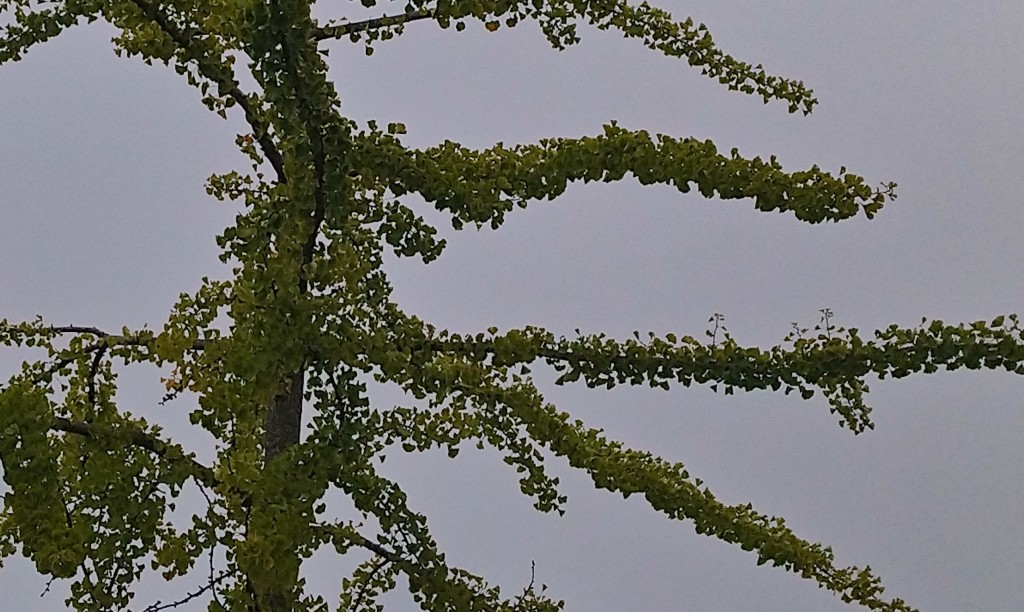
[163] Ginkgo biloba, Ginkgo
Introduction
Ginkgo biloba, usually just called a Ginkgo, can be seen as a living fossil, the sole member of a side-branch of the tree of life, which has long been virtually extinct in the wild.
It can also be spelled as Gingko (as it is usually pronounced) and is also known as the Maidenhair Tree.
It is a tall, erect tree but neither produces flowers nor cones. It produces seeds.
Taxonomy
Kingdom: Plants
Division: Ginkgophyta
Class: Ginkgoopsida
Order: Ginkgoales
Family: Ginkgoaceae
Genus: Ginkgo
Scientific Name: Ginkgo biloba
Apart from ferns and mosses, plants are either Angiosperms (producing flowers), with about 300 000 species or Gymnosperms (producing seeds) with about 1000 species. Gymnosperms are split into four groups – Conifers (600 species), Cycads (about 300), Gnetophytes (about 70), and the Ginkgo, the sole living representative of the Ginkgophytes.
As you can see the Division, Class, Order, Family and Genus all consist of just one species! It does have many closer fossil relatives in prehistory but all of them have been extinct for millions of years.
Name
The name (both common and scientific) derives from a mis-spelling of the Japanese ‘gin kyo’, meaning ‘silver apricot’, which comes from the Chinese where it has been used for hundreds of years in herbalism
Description
For a tree with such an unusual place in biology, they are relatively nondescript in appearance. I have walked past one in the pavement of a local street many times without noticing it. They tend to grow vertically at first, becoming tall and thin, and then they develop almost horizontal branches.
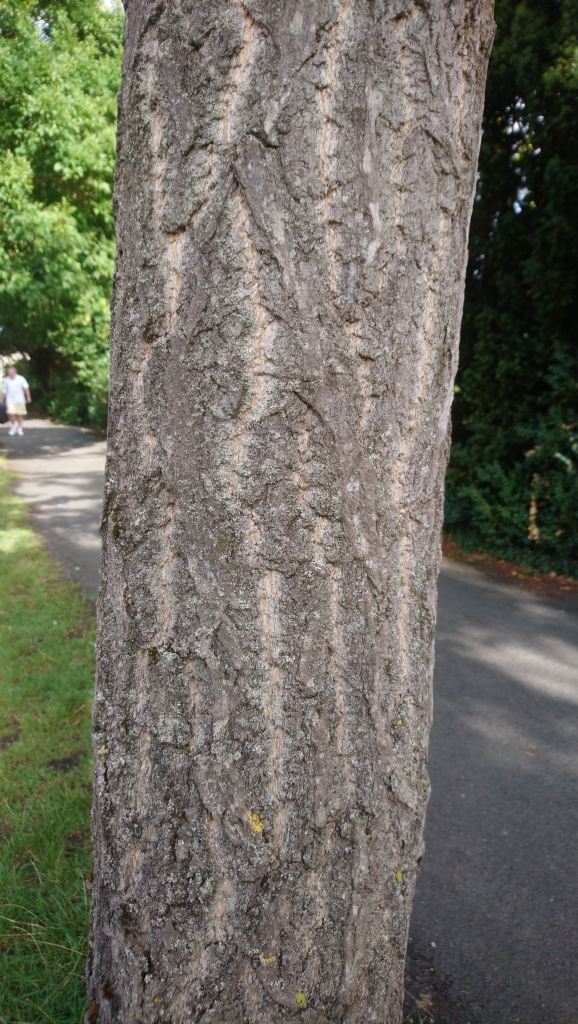
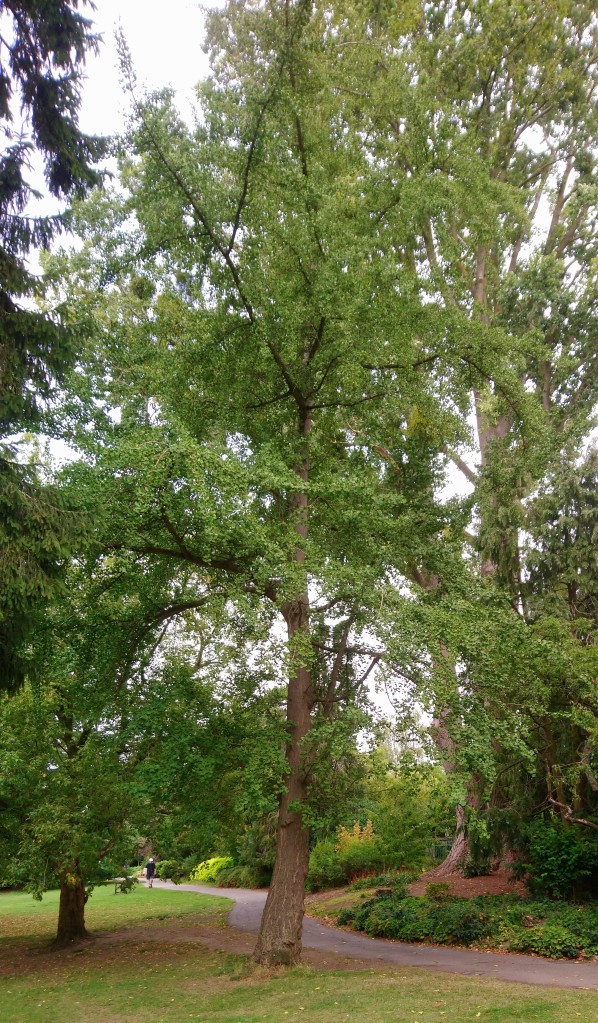
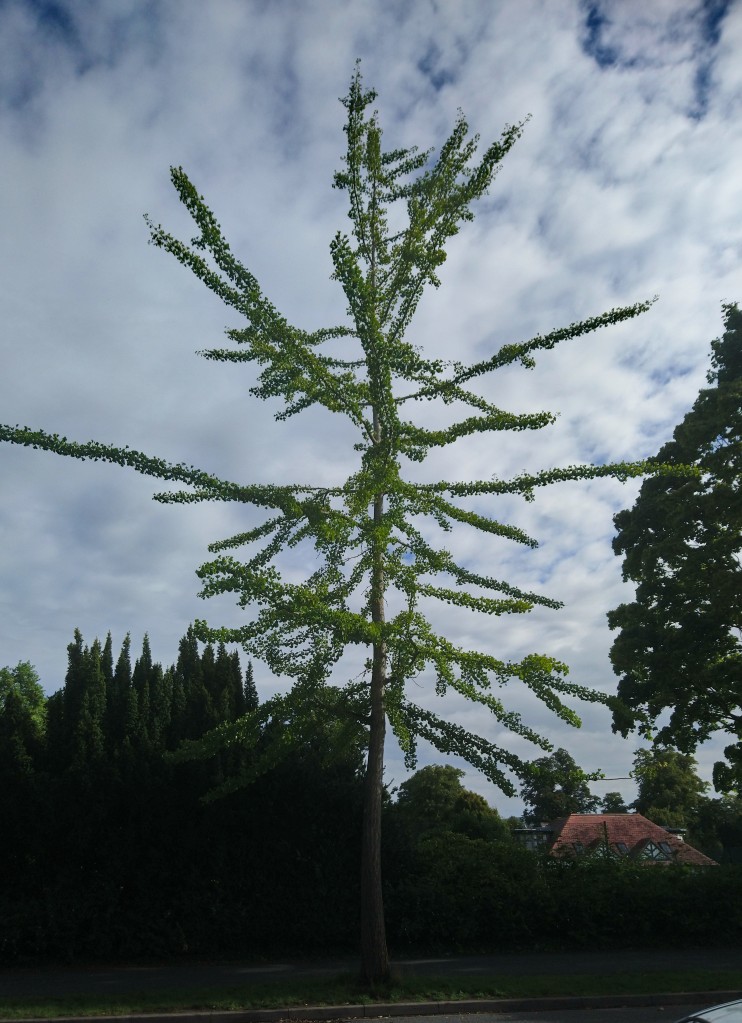
On closer inspection the leaves are fan-shaped and unique, with a smooth almost plastic appearance. The veins in the leaves may split but they do not re-join.

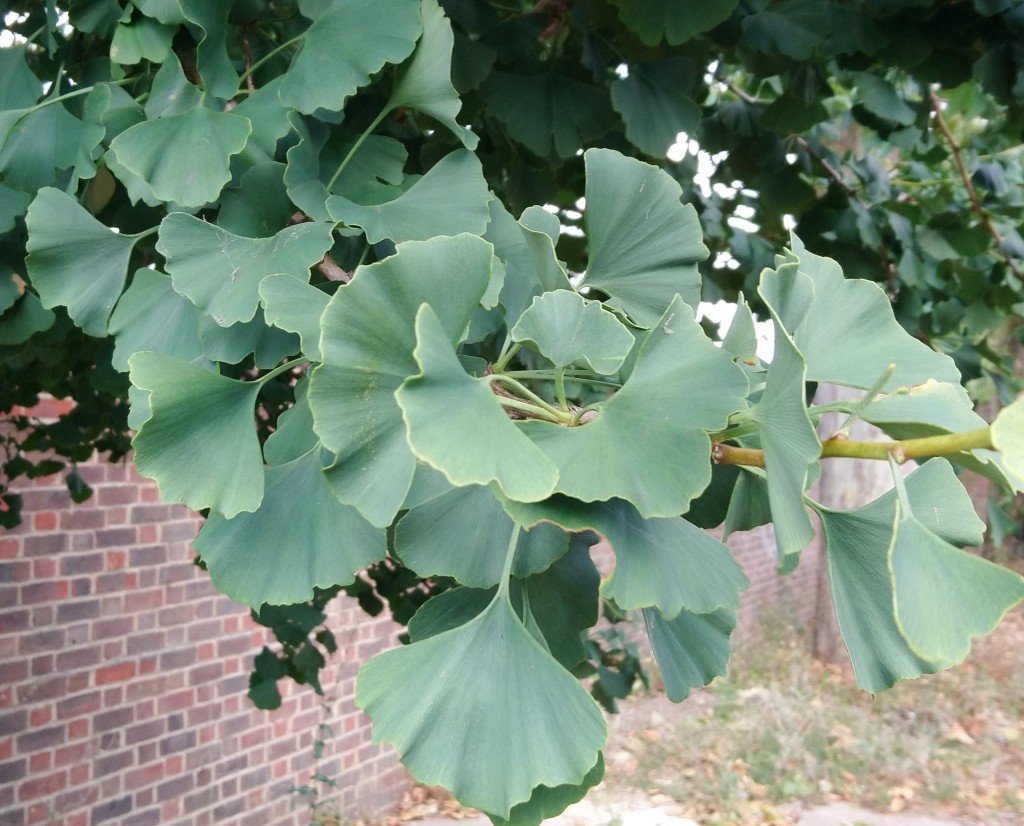

Habitat and use
The Ginkgo has survived in the wild only in some very small areas of China and it may have done so only with the help of Chinese monks. But it has been widely cultivated in China for hundreds of years. It has been introduced through Europe and America without becoming naturalized.
It is slow growing and resilient with some specimens over two thousand years old. The nearest living things to survive at Hiroshima were six Ginkgo only about a kilometre from the bomb. All six are now alive and growing.
They are still used in China for cooking and for medicinal uses.
It is established in the UK and has several cultivars available.
Other Notes
I was surprised to find out that we have a local specimen in Pittville Park, but even more surprised to find others. I am beginning to lose count but I think it’s around eight so far within walking distance of my home. They are all relatively young, very tall and thin.
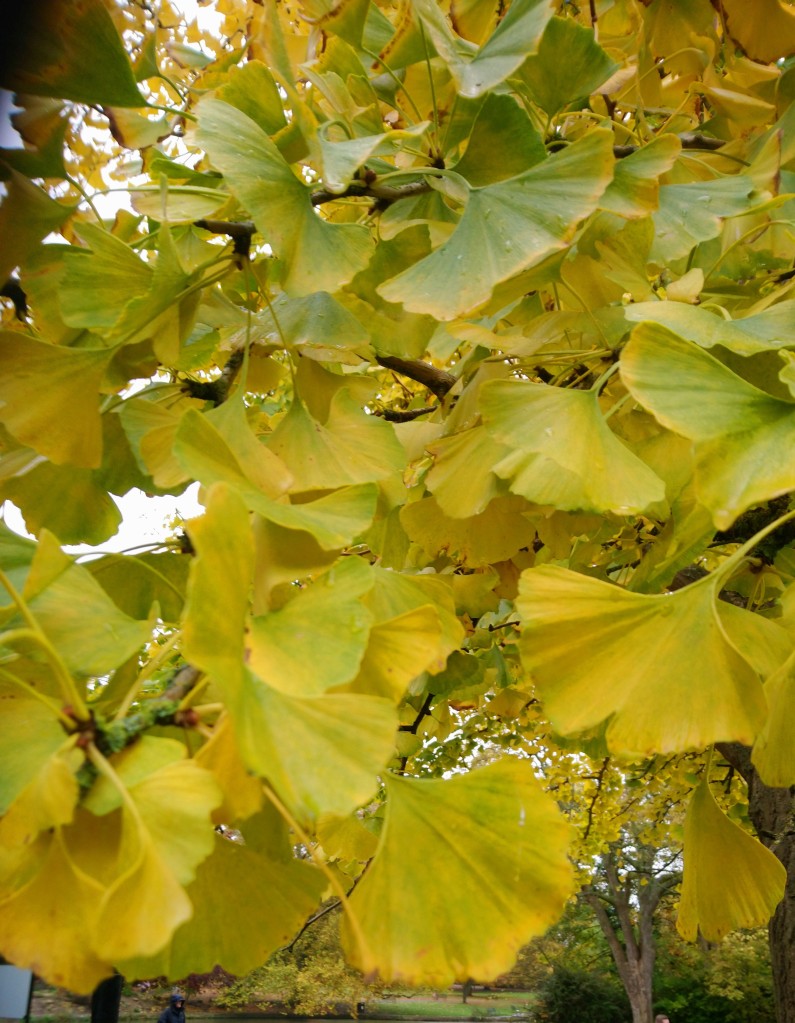
See also
It should not surprise you that there are no remotely similar trees to compare with a Ginkgo.
